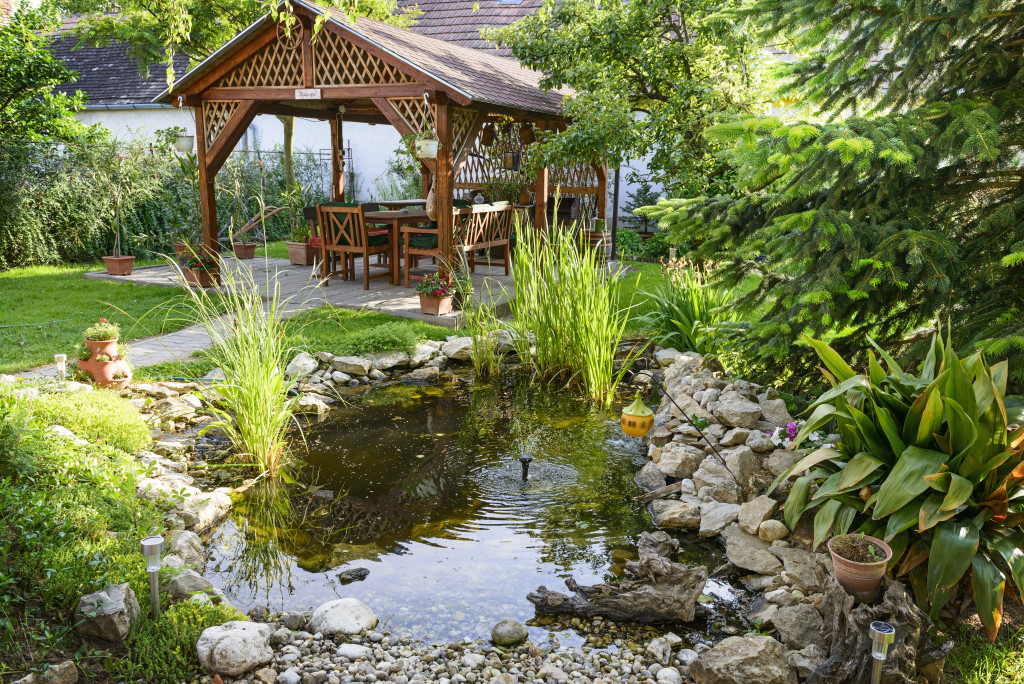- Identifying the source of anxiety is important in helping children cope with their emotions.
- Parents should stay supportive, consistent, and open when helping their child manage their anxiety.
- Encouraging relaxation techniques such as deep breathing and mindfulness can help children deal with anxiety.
- Work with a landscaper to create an oasis in the home that provides beauty, shade, and privacy.
In 2020, the number of children and adolescents suffering from anxiety and depression increased to 5.6 million, or around 9.2 percent of the total number of children. These children experienced anxiety problems. Another 2.4 million, or 4 percent, were diagnosed with depression. The figures increased by 27 percent for anxiety cases and 24 percent for those diagnosed with depression compared to pre-pandemic figures from 2016 to 2019.
Anxiety is an issue that affects children of all ages and can be especially difficult for parents to manage. It’s essential to understand the underlying causes of anxiety to effectively help children learn how to cope with their emotions. Below are some strategies for managing anxiety in children at home.
Identifying the Source of Anxiety
Identifying the source is the first step in helping children deal with their anxiety. The root cause could be anything from fear or phobia, bullying, stress, or even a traumatic event. Once you have identified the source of your child’s anxiety, finding ways to help them cope will be much easier. Involving your child in identifying and addressing their anxiety can also help them understand why they feel the way they do. Parents should also provide them with tools to manage it.
Find Ways of Dealing with Anxiety
For children who experience chronic or persistent anxiety, a mental health professional may be able to help. Cognitive behavioral therapy (CBT) is an evidence-based approach that can help children learn more effective and healthy ways of dealing with their anxiety. Other therapeutic methods, such as play therapy or family counseling, can also help provide support and insight into the child’s feelings and experiences.

Stay Supportive and Consistent
It is important to remember that helping a child with anxiety is an ongoing process. Even when things seem to be going well, it is crucial to be supportive and consistent. Keeping communication open and honest with your child can go a long way in helping them feel safe and secure. With the right approach, children can learn how to effectively manage their anxiety and lead happy, healthy lives.
Creating a Safe and Supportive Environment
It’s essential to create a safe and supportive environment where your child can feel comfortable expressing their feelings without judgment or criticism. Try listening without interruption and providing reassurance when needed. If necessary, seek professional help so your child can get the support they need to overcome their anxiety.
Encourage Children to Relax
Encourage your child to practice relaxation techniques such as deep breathing and mindfulness to help them cope with their anxiety. Finally, strive to maintain a positive outlook when talking about anxiety and remind your child that it’s a normal part of life and can be managed. Your child can lead a happy and fulfilling life with the right tools and support system.
Understand the Child’s Feelings
Avoid using phrases that can be interpreted as judgmental or critical when talking to your child. Instead, focus on understanding your child’s feelings and helping them identify strategies for managing their anxiety. Building a trusting relationship with your child is also vital to help create an atmosphere of safety and support. Let your child know you are there to listen and guide them in dealing with their anxiety.
Recognize and Challenge Anxiety
Allow your child to take control of their anxiety by encouraging them to recognize and challenge anxious thoughts. You should also encourage them to practice relaxation techniques, engage in joyful activities, and talk about their feelings. Modeling a healthy attitude toward stress is also essential; this will show your child that even adults can experience and deal with anxiety.

Create an Oasis in the Property
Creating an oasis in the property can be a great way to make it more inviting and enjoyable. Adding a water feature such as a fountain, pond, or pool can create a calming atmosphere and provide an aesthetic appeal.
Incorporate Nature into the Design
Planting trees and shrubs around the area can provide shade, privacy, and beauty while attracting birds and other wildlife. Other options for creating an oasis include:
- Adding planters with flowers.
- Building a gazebo or pergola to provide shade.
- Installing outdoor lighting fixtures to create a warm ambiance.
Work with a Professional
You should work with a reliable professional landscaper to enhance the house’s garden to achieve this atmosphere. The landscaper should have an excellent reputation for creating notable home landscapes to provide an oasis for the children. The professional can incorporate a patio or deck into the design to have a comfortable space for entertaining guests or simply enjoying the outdoors. You can also spruce up the area with outdoor furniture, a fire pit or fireplace, and other features to make the space more inviting.
Dealing with anxiety can be difficult for both children and parents alike. But there are things you can do to make the process easier for everyone involved. By following the tips enumerated in the article, you can help them learn how to better manage their feelings so that they can live a more peaceful life at home. With these strategies in mind, parents can ensure that their children get the care and support they need during distress or uncertainty.
